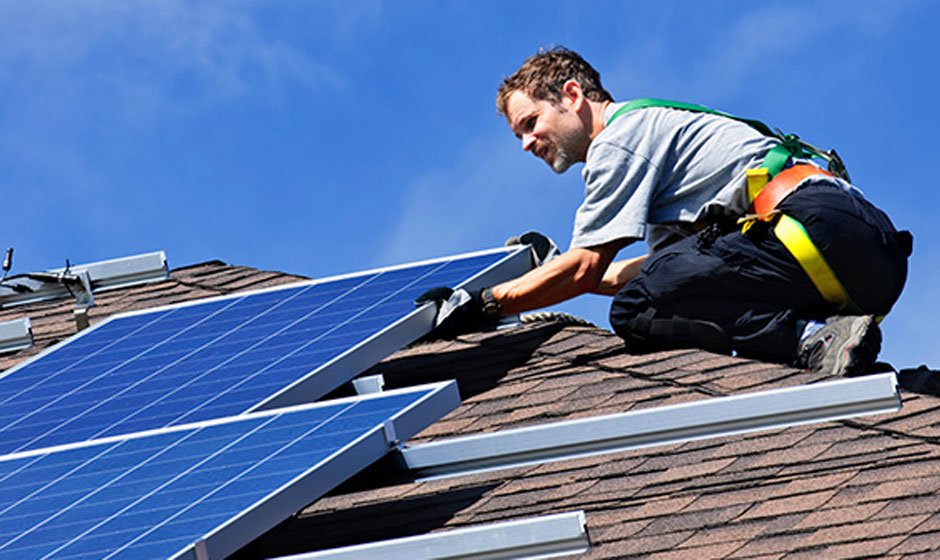Installing solar panels is paramount to harnessing clean and renewable energy from the sun. Solar energy systems can help homeowners reduce their electricity bills, lower their carbon footprint, and contribute to a more sustainable future. Nevertheless, the installation process implicates several key considerations and steps. We will explore what you need to comprehend about installing solar panels.
Steps to installing solar panels
1. Site Assessment and Solar Potential:
Before installing solar panels, assessing your site’s solar potential is crucial. This involves evaluating factors such as the orientation of your roof, shading, and local climate conditions. The efficiency of your solar energy system will depend on the amount of sunlight your panels can capture. Solar panels should be installed on a south-facing roof with minimal daily shading. However, east and west-facing roofs can also be viable options, depending on your location and specific circumstances. Conducting a solar site assessment will help determine the best placement for your panels.
2. Roof Condition and Structural Assessment:
Your roof’s condition and structural integrity are essential considerations for solar panel installation. Solar panels have a lifespan of 25 to 30 years or more, so it’s paramount to ensure that your roof can support them for the duration of their service life. A professional installer will assess your roof’s condition, checking for any indications of damage, leaks, or structural issues. If your roof requires repairs or replacement, addressing these issues before installing solar panels is advisable to avoid complications down the road.
3. System Sizing and Energy Needs:
Determining the right size for your solar energy system is paramount. It should align with your energy consumption and financial goals. You must review your electricity bills and understand your average monthly energy usage to do this. A well-designed solar system should cover a significant portion of your energy needs. Solar installers utilize tools and software to calculate the system size established on location, solar panel efficiency, shading, and sun exposure. By accurately sizing your solar system, you can maximize your savings and achieve the best return on your investment.
4. Solar Panel Selection:
Choosing the right solar panels is a paramount decision in the installation process. Various types of solar panels are available, including monocrystalline, polycrystalline, and thin-film panels. Each type has its own efficiency, durability, and cost considerations. Monocrystalline panels are comprehended for their high efficiency and longevity. They are a popular choice for residential installations where space is limited. Polycrystalline panels offer a more cost-effective option with slightly lower efficiency. Thin-film panels are lightweight and flexible, making them suitable for unconventional installations but with lower efficiency. Your choice of solar panels should align with your budget, space availability, and energy generation goals.
5. Inverter Selection:
Inverters play a vital role in converting the direct current (DC) electricity generated by solar panels into the alternating current (AC) electricity used in homes and businesses. Three main types of inverters are string inverters, microinverters, and power optimizers. String inverters are cost-effective and suitable for most installations but may suffer performance issues due to shading or panel mismatch. Conversely, microinverters are installed on each solar panel, allowing for better performance in shaded conditions and panel-level monitoring. Power optimizers provide a hybrid solution, optimizing panel performance while being more cost-effective than microinverters. The choice of inverter technology should consider factors such as shading, system size, and budget.
6. Permitting and Regulations:
The installation of solar panels typically involves obtaining permits and complying with local regulations and building codes. While your solar installer should handle the permitting process, it’s crucial to be aware of the requirements in your area. Permits often require you to submit plans and documentation, inspect your installation, and ensure compliance with zoning and safety regulations. Working closely with your installer and local authorities will help you navigate the permitting process smoothly. Choosing a solar company near you is vital in this process. They’ll have a thorough understanding of local regulations, faster permit acquisition, and often a better relationship with area inspectors and officials. Their proximity and familiarity with your community’s specific requirements can significantly expedite and simplify the installation process, ensuring that your solar panels are installed correctly and efficiently.
7. Financial Incentives and Rebates:
Many regions offer financial incentives and rebates to promote solar panel installations. These incentives can substantially reduce the upfront cost of your solar system and enhance its return on investment. Common incentives include federal tax credits, state-level incentives, and utility rebates. Researching available incentives in your area and collaborating with your installer can help maximize your savings and make your solar installation more affordable.
8. Financing Options:
Solar panel installations can be financed through various methods, each with advantages and considerations. An outright purchase authorizes you to own the system and enjoy the most extended-term savings, with reduced energy bills and potential incentives. Solar loans enable you to finance and pay the system over time. Solar leases and power purchase agreements (PPAs) involve renting the solar system from a third party in exchange for a fixed monthly payment or purchasing the electricity generated by the system. The choice among these financing options depends on your financial situation and preferences for system ownership and benefits.
Several factors can cause an air conditioning system to stop working, ranging from electrical issues to refrigerant leaks, thermostat malfunctions, and dirty components. Regular maintenance, including cleaning or replacing air filters, inspecting and cleaning coils, and checking for refrigerant leaks, can help prevent many of these problems. Promptly addressing issues when they arise and seeking professional HVAC services for diagnosis and repairs can ensure that your air conditioning system operates efficiently and reliably, providing consistent indoor comfort during the hot summer months. By understanding the common causes of air conditioning failure, homeowners and businesses can take proactive steps to maintain their cooling systems and avoid unexpected downtime. Solar panels reading sunlight and converting it into clean energy is environmentally friendly and a smart investment in a sustainable future.

